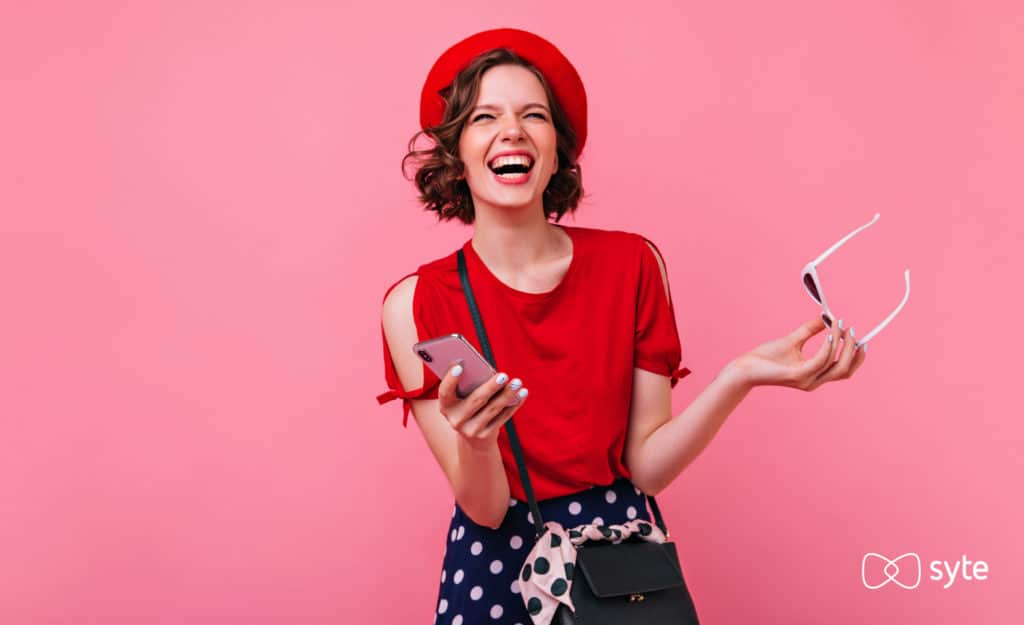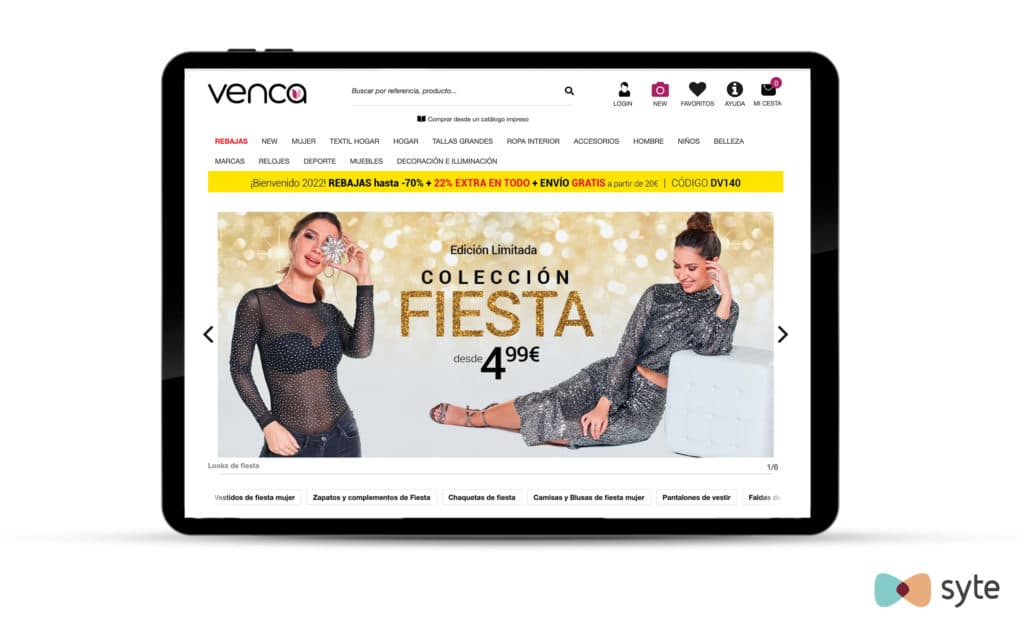Of all the things online brands and retailers need to get right, product discovery is right up there at the top of the list. Product discovery is central to every component of a successful eCommerce experience. It’s what introduces shoppers to your inventory. It’s what enables you to make sales. And on a high level, it determines the quality of the overall customer experience.
When developing their product discovery strategies, most brands focus on three areas: online merchandising, on-site search, and product recommendations. However, product discovery in its most powerful and sophisticated form involves much more than simply exposing shoppers to products.
If you want to make a real impact, you need to find a way to elicit an emotional connection between a shopper and a product. You want the shopper to feel so inspired and so recognized, it’s impossible for them not to purchase.
The key is building an experience that connects shoppers to the perfect products for them at exactly the right moment in exactly the right way. That’s how you transform product discovery into demand. In this post, we’ll go over three practical strategies you can implement to achieve this goal on your eCommerce site.
Consumers Are Raising the Bar for Product Discovery
When eCommerce was new, product discovery was just about making sure site visitors could find the products they were looking for. Then, when product recommendations and merchandising tools came into the picture, it became easier to improve the relevance of the items consumers encountered in their shopping journeys.
But today, both consumers’ and retailers’ standards are rising. Being able to locate relevant products is the bare minimum. What really stands out in 2022 is an engaging and emotional shopping experience that not only inspires, but entertains.

Two main factors are driving this new wave of product discovery.
- eCommerce is no longer a novelty – The act of scrolling through online shops, apps, and brands’ social media accounts has become so routine and mundane, everyday browsing is no longer the exciting experience it once was. The threshold for engaging consumers is higher—shoppers need novelty and excitement to capture their attention and inspire them to buy.
- Sophisticated technology is now commonplace – Advanced technology that aids product discovery enables brands and retailers to create more innovative, experiential, and personalized experiences. As consumers have become more accustomed to such technology, they’ve also come to expect it. As a result, tech leaders easily provide more engaging product discovery experiences, while laggards struggle to resonate with shoppers.
3 Ways to Turn Product Discovery Into Irresistible Demand
Here are three ways you can take advantage of sophisticated eCommerce technology to provide tailored and captivating product discovery experiences.
- 360° personalization (for the shopper who wants to feel catered to)
When you nail personalization, you lay the foundation for a highly inspiring and exciting product discovery experience—one that makes your shoppers think, I have to have this – it’s meant for me! That’s the goal with a 360° approach to personalization.

To put this approach into action, you need to collect a broad dataset of crucial information that can produce a complete 360° view of each customer’s shopping journey with your brand. The challenge today is how to collect this data while still respecting consumer privacy laws and the phase-out of invasive third-party cookies. There are two solutions to this issue.
First, brands and retailers should shift their attention away from the types of people visiting their sites and focus instead on the types of products – and product details – that they are viewing. This type of data can tell you a lot more about a shopper’s taste and preferences than generic demographic information. It also enables you to make shoppers feel seen and understood because your website is surfacing multiple products that they actually connect with instead of just seeing recommendations for items recently bought by other shoppers who match their age, gender, or location.
For example, if you know that a site visitor is looking at casual women’s tops, you can use visual AI to understand and identify specific features that they like. Let’s say they’ve clicked on a number of different tops with cap sleeves, sweetheart necklines, and floral prints. With this information in hand, your site can dynamically display a personalized recommendation carousel of other items (not just tops) – like dresses or sweaters – that that shopper is likely to want based on the product details they have engaged with so far.
How does it work? Product-driven data collection and analysis is powered by visual AI that automatically creates detailed meta-tags for every item in your product catalogue. When a shopper visits a product listing page or product detail page on your site, visual AI software can look at the metadata and identify granular product details that individual shoppers are looking at live – and give them more of what they want without compromising their privacy in any way. This allows brands and retailers to dig deeper than the SKU level when trying to build a personalized customer experience.
The other half of data collection for 360° personalization puts shoppers in the driver’s seat. Brands and retailers can offer direct engagement opportunities that allow individuals to volunteer their own data in order to receive a better user experience on your site. This is called zero-party data collection and can be achieved in a number of different ways, so long as you are transparent about how the information will be used.

For example, you can ask shoppers to complete a short quiz, participate in a game, or join your loyalty program. In exchange for answering your questions or filling out a form, you can provide free product samples or loyalty points – and make it clear that you will use their data to personalize their current and future shopping journeys on your site (and your site alone).
By offering an interactive and visually engaging way for shoppers to specify what they want, you can effectively recreate the experience of working with a personal stylist. You’ll be able to populate your search results and product recommendation carousels with hyper-relevant, curated product lists that feel on-point to that specific shopper.
- Inspiration-led shopping (for the shopper who is looking for some excitement)
This method of product discovery can be particularly effective for casual browsers who are open to a variety of product categories. It involves emphasizing collections, user-generated content, inspiration boards, and product recommendations in key real estate on your website. The goal here is to spark an emotional connection with eye-catching looks that can lead shoppers on a product discovery journey based on the visual details that inspire them.
Collections, for example, can be curated in an aesthetic or branded way using detailed product tags provided by visual AI. Products grouped in this way can be easier to connect to than generic product groupings such as “New In” or “Most Popular.”

Imagine you are searching for an outfit to wear to your friend’s upcoming birthday party at a cocktail bar. You go to a brand’s homepage where you see a banner for their party collection. The cover image looks absolutely fabulous. You click. Mind is blown. When you enter the collection, you’re greeted with a full-screen video—including sound—featuring a dozen women rocking different styles of dresses. Below that, there are static images more clearly displaying the dresses, shoes, handbags, jackets, and accessories featured in the video, with the option to click to view more similar styles.
After just a few clicks, you excitedly add a complete outfit – a new dress, heels, earrings, and clutch – to your cart. What started as a captivating video quickly leads to product selection, refinement, and purchase. Goal achieved! By showing a collection of related items, the brand not only inspired you to increase your basket size but provided a thrilling product discovery experience that will keep you coming back to their site for more inspiration in the future.
Another option for inspiration-led navigation is to provide a “Shop Similar” button on product photos or UGC galleries. This way, if a shopper sees something they like, they can quickly and easily click through to see recommendations for similar items.
With visual AI technology, brands and retailers can reveal all kinds of products that consumers wouldn’t necessarily have known about or even been able to describe via text search. For open-minded shoppers, this can lead to an exciting and memorable shopping experience.
- Intuitive recommendations (for the shopper who wants to build an entire look)
How many times have you found a unique piece of clothing, jewelry, or furniture, but didn’t buy it because you weren’t sure what it goes with?
For example, maybe you came across a pair of green leather mules while browsing on your favorite retail site. They were exactly the kind of funky shoe you’ve been dreaming about, but you have no idea how to style them. Do they go with a skirt? Jeans? And what color top pairs well with that shade of green? When a shopper can’t immediately figure out how to style an item, they are more likely to abandon it.

Intuitive recommendations allow you to quickly connect shoppers who are interested in one product with other items that complement the original find. These kinds of recommendations can spell out the difference between a frustrated shopper who buys nothing at all and an excited shopper who buys an entire cart full of items.
Intuitive recommendations combine insights about each shopper’s individual style, taste, and goals with the trend or look of the product they are interacting with to build out curated suggestions that cover a wide range of product categories. Shoppers can also refine these carousels and “swap” out results for other recommendations by liking or disliking products.
It’s Time to Step Up Your Product Discovery Game
As time goes on, more and more online shoppers will expect a seamless user experience that feels catered to them and their unique preferences. By stepping up your brand’s product discovery game with 360° personalization, inspiration-led navigation, and intuitive recommendations, you will be able to capture more shoppers’ attention, trigger an emotional connection to your brand and products, and motivate them to buy more items that they will love.